10 Days In Italy: Photo Essay Of Angels & Demons
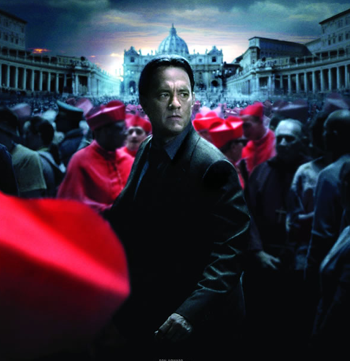
In case you missed it, here are the previous and upcoming posts about our summer trip to Italy:
- United Airlines To Rome
- St. Regis Rome
- Vatican
- Osteria 44
- Photo Essay of Angels & Demons
- A Quiet Meal At Cul de Sac
- Trevi Fountain (Semi) Closed For Business
- A Fast Train To Venice
- St. Regis San Clemente Island
- Hotel Danieli
- Antico Pignolo
- A Quick Trip To Murano
- How To Ride The Vaporetto (Water Bus) In Venice
- Getting Lost In Venice
- British Airways 787 Flight Home
While I do enjoy the occasional movie, I’ve always found I find the must enjoyment from getting lost in a good book. My daughter is reading The Lion, The Witch and The Wardrobe for the first time, and it has brought back memories for me of that first time the kids ventured through the coats hanging up to enter a mysterious world.
Dan Brown wrote a couple of books that weaved an enjoying tale for me, Angels & Demons especially. Rome is a place that we’ve returned to frequently, getting to know the city more than many others. For those that haven’t read the book, Angels & Demons is historical fiction prominently centered around Rome. During previous trips to Rome, we’ve made a point to visit some of the places featured in the book for a real-life perspective. On this most recent trip, I had the idea that it might be fun to do a photo essay of some elements of the book. I had originally envisioned it would just be pictures but there were some stops that I thought deserved a bit of perspective.
For the purposes of this post, I’ll assume you read the book and not try to re-tell parts of the story. If you haven’t, I suggest giving it a try. In the mean time, come take a little walk around Rome with us while we visit the landmarks Rome has to offer for Angels & Demons.
After mistakenly believing that the first pillar of science is the Pantheon, Robert and Vittoria end up at the church of Santa Maria del Popolo. The church is located in a wide-open piazza a very short walk from the Spanish Steps. It matches very much as Dan Brown portrays it in the book. There are a number of small chapels that line both sides of the church. Unfortunately, the photo essay starts out a bit less than illuminating, in that while it was relatively easy to locate the Chigi Chapel, it was under construction.
While the angel wasn’t visible behind the construction, the book tells us it points Southwest to the next marker on the path of illumination, a relief Bernini had installed in St. Peter’s Square (not to be confused with the optical illusion he installed there). You’ll find yourself back in St. Peter’s Square, not far from where Robert and Vittoria found themselves before dashing off to the Pantheon. And, it’s very easy to see the Bernini relief’s that feature air, the next pillar of science in the path.
After some research in the Vatican Archives, Langdon and crew race off to the Church of Santa Maria del Vittoria. When I mapped out the different locations that we hadn’t visited in the past, I was mildly surprised to find that the church was literally a 2-minute walk from the front door of the St. Regis Rome. The book locates the church in Piazza Barberini. That’s factually incorrect, but close. It’s less than a 5-minute walk. It’s fairly nondescript as churches in Rome go and we had probably walked by it a dozen times.
Again, I think Dan Brown did a good job painting the picture in the book. While the church is smaller than I may have imagined in the book, I could see the priest strung up above the alter with flames below. Wooden pews line the main part of the church as in the book, though again smaller than I imagined.
Dan Brown discusses how the particular indecent scultpure (Ecstasy of Saint Teresea) was banished here to this nondescript church because the Vatican was ashamed with its unabashed sexuality. I’m not a prude, but I guess it is a bit racier than most pieces you’ll find in any other Vatican facility. But, that’s probably only if you can envision the arrow the male holds as the object of his, um, affection to the female.
The one piece of oddity that Dan Brown left out about this church is another sculpture I found on the opposite side of the church. I haven’t researched the origin of the piece, but I couldn’t help but believe this was very clearly a display of a woman with her throat cut, bleeding. In a Catholic church in Rome. Go figure. Despite a decent amount of Google time, I couldn’t find more information out on this.
Piazza Navona (Fountain of the Four Rivers) rounds out the four pillars of science with its water elements. A dove sits atop the obelisk in the fountain with an eye towards the Path of Illumination according to the book. Before reading the book, Piazza Navona was a favorite spot of ours. Artistic by day, mysterious at night, my wife and I have dined, shopped and explored the nearby area many times.
The sculptures really do take on a completely different character at night. While the area itself can be a bit touristy, it’s an appropriate setting for the final pillar of science.
Castel Sant’Angelo wraps up Dan Brown’s path of illumination. The picture he paints is one of the Illuminati meeting right under the Vatican’s nose to plot against them. This is also geographically correct, in that Castel Sant’Angelo is less than a half mile from St. Peter’s Basilica. As well, there is public record of a tunnel between St. Peter’s and Castel Sant’Angelo, dating back to the days when the latter was a fortress to defend the former. The turrets at the top tie nicely into the story of Langdon’s final triumph over the Hassassin.
I believe a good story requires suspension of disbelief in a reasonable helping to fully immerse yourself in it. The book is one I would have enjoyed even without a walking knowledge of Rome. The relative accuracy of the landmarks that tie fiction back to reality make it a bit more fun. You can see the popularity of the books in some of these locations, in that we certainly weren’t the only ones staring at the Chigi Chapel in Santa Maria del Popolo murmuring about a demon’s hole. Santa Maria della Vittoria was relatively empty when I visited, so maybe not everyone who read the book and came to Rome chose to follow the path of illumination.
Not surprisingly, my short post with only pictures has gotten a bit long. I hope you enjoyed coming along to explore with us. And, if you’ve read the book, I hope our window into the backdrop of the story encourages you to explore it yourself.



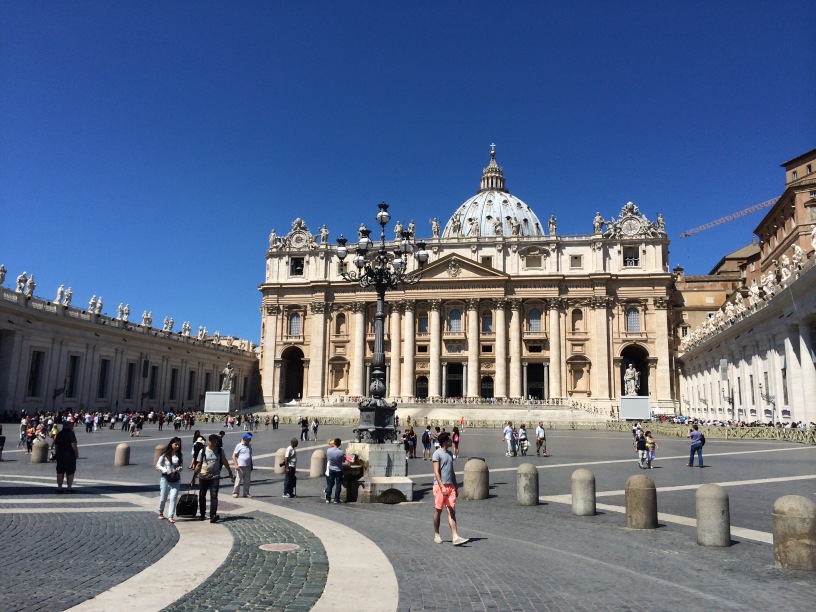






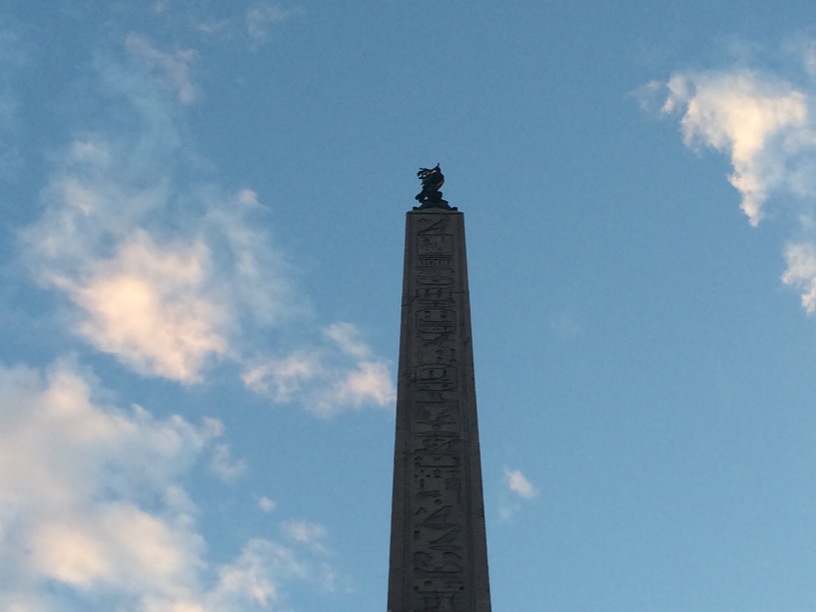
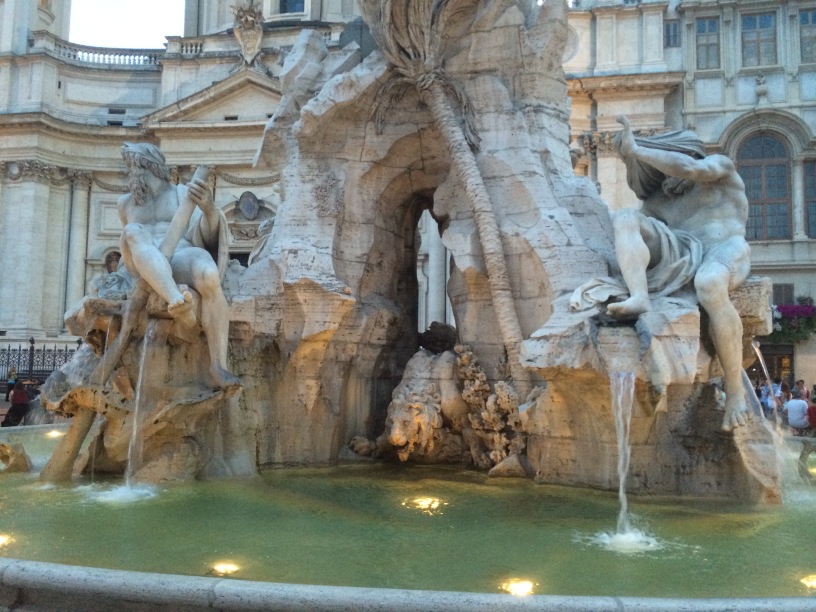


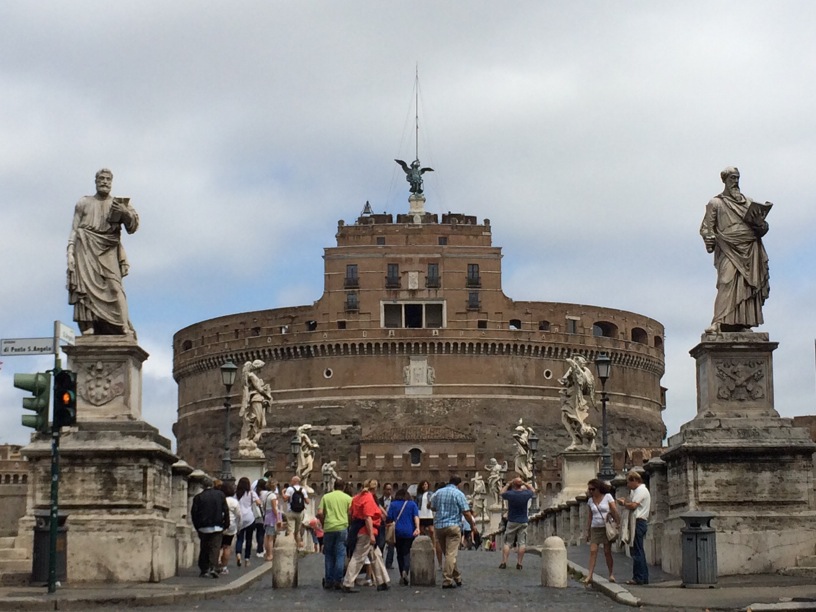
Ed: Love the 10-days in Italy reviews; really excellent writing & puts me right back in Rome & Venice and has added incentives to visit places I haven’t been before. Thank you!
Maureen, hope you’re doing well! I’m glad you’re enjoying reading the reviews. I’m having fun writing them. Not that I need more incentive to go back, but feel free to share your Rome & Venice favorites so I can add to my list!